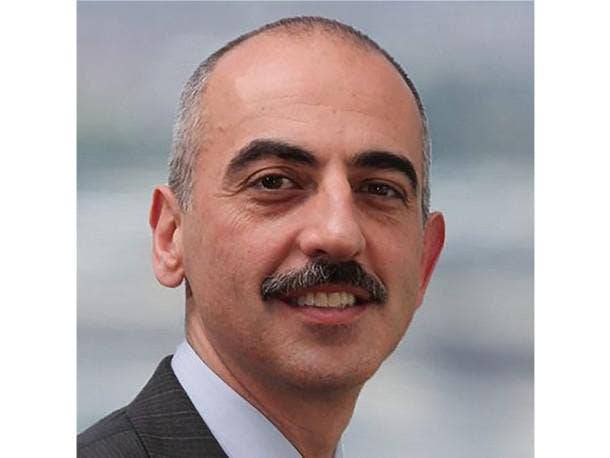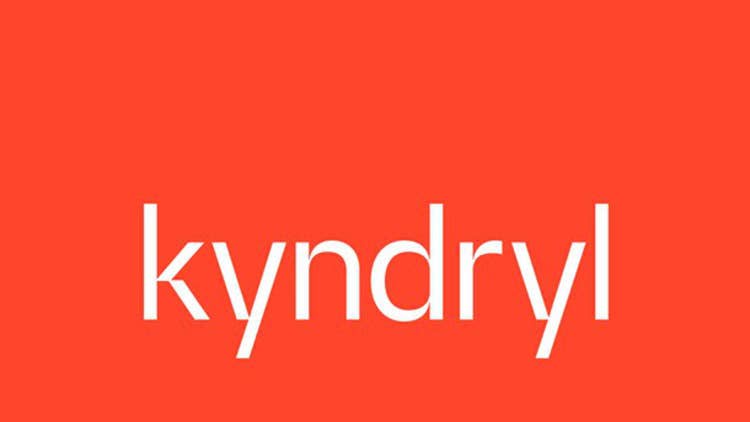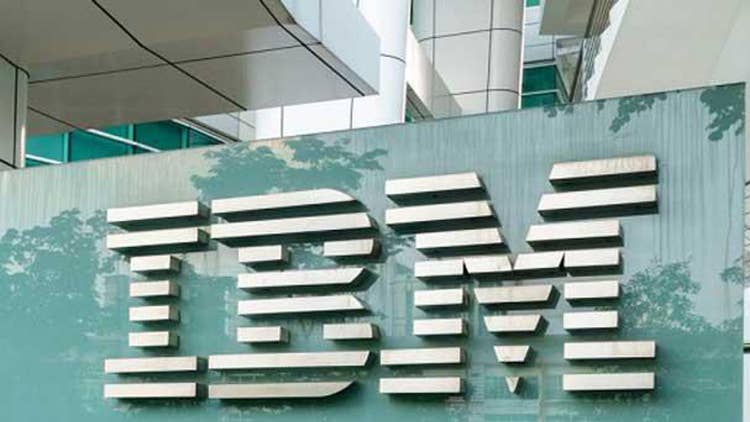Kyndryl CTO Antoine Shagoury: IP ‘War Chest’ Part Of Competitive Advantage
‘When we were working with IBM, [we had a] very targeted solution set, very targeted application set [in order] to proliferate within the portfolio,’ Kyndryl Chief Technology Officer Antoine Shagoury told CRN in an interview. ‘That’s gone.’

Kyndryl Spins Off
A “war chest” of intellectual property and newfound freedom to form partnerships with vendors outside of IBM are part of the competitive advantage that the newly independent Kyndryl hopes to bring to the digital transformation market, Kyndryl Chief Technology Officer Antoine Shagoury told CRN in an interview.
IBM completed the separation of its managed infrastructure services business Wednesday, and the spin-off company, Kyndryl, debuted on the NYSE Thursday under the symbol “KD.”
“When we were working with IBM, [we had a] very targeted solution set, very targeted application set [in order] to proliferate within the portfolio,” said Shagoury, who joined Kyndryl earlier this year. “That’s gone. That’s going away fairly quickly.”
For Shagoury, formerly the chief information officer at State Street Corp. and the London Stock Exchange, Kyndryl stands above the pack in its technical ownership and expertise.
“We have one of the world’s largest operational data lakes,” he said. “We ingest about 4 TB every day. And as we start to do that, we not only offer our continuity of service, we now offer insights into operations.”
Kyndryl also has “a tremendous amount of IP around cloud enablement tools, cloud affordability, optimization, things that we’ve done naturally as a part of IBM, but we built them to be agnostic.”
In September, Kyndryl disclosed an array of details about its business and operations in a regulatory filing, including its declining revenue for the past several years, workforce reductions, the competitive landscape (including with competitors such as DXC Technology) and vendor partnerships beyond IBM (such as with VMware and Microsoft).
In the regulatory filing, Kyndryl said it foresees taking part in a $415 billion market for providing “innovative services to design, run and modernize customer technology environments.”
What follows is an edited portion of CRN’s interview with Shagoury.

What do you want people to know about Kyndryl?
As we start to expand out our partnership network, that really opens up a tremendous path to work with our clients on modernization, on how they introduce new services and solutions in their own environments. It really increases our value proposition ... We have a fairly large workforce, just under 90,000 people, strong engineering capabilities, and we probably have the highest concentration of modernization operation teams.
You put those two combinations together, it really opens up a strong path to deliver the value around transformation, modernization -- whether it’s hyperscalers, or cloud journeys, better AI adoption on data, or even how to get better into helping our clients expand … How do we actually get more exposed to get our products better to service, better usability, better reach geographically? And this puts us in a very strong, niche position to close that gap.

What is Kyndryl’s competitive advantage?
One, reflection on our current client base. So given the breadth and the depth of our client base and the client base that we serve, whether you look at the top 75 percent of the Fortune 100, we’re supporting a good majority of manufacturing, industrial, transportation, health care services. … There’s few that are operating in that space. I’m not saying we’re alone, but it’s a small pack that we’re starting to deal with.
One of the things that we’ve done, even under the IBM umbrella, was building deeper knowledge not only in the company operations, but building insights into how they’re operating.
All the work, all the metadata, we start to collect and help them not only through automation, but intelligent operation. We actually preach it. We live it. We run it every day.
We have one of the world’s largest operational data lakes. We ingest about 4 terabytes every day. And as we start to do that, we not only offer our continuity of service, we now offer insights into operations.

With IBM more focused on software and consulting, is hardware a dirty word in digital transformation?
A large part of our business is around the clients that are heavy in the enterprise space, having the mainframe space … It’s a part of operations. You think about the banking sector, the insurance sector, they’re heavy mainframe based, and a lot of that transition and migration moves slowly.
And it’s not because of just the technology, it’s you have tenured applications, ingrained business processes. It does add a lot of complexity on how they look at modernization. But it’s an area in which we were probably one of the strongest in the marketplace.
That’s also how we look at their journeys a little differently. So how do we look at helping to decompose their services? How do we start making them asset smart? Do you need everything on the mainframe this way? Do you need to have this dedicated storage environment to the services? How many start to enable your business?
We use the term a lot “mobility,” but how do we get to mobility and portability of services? You can really start to focus on your core business and your core engine.
So that’s how we start to do it. Our asset footprint is pretty much akin to our clients, and as they start to get farther into migration paths, so do we in that scenario. And it’s a nice sweet spot for us, too.
So we get into, how do we apply what we’ve learned across other journeys, similarly situated clients? It’s that metadata concept again. And how do we help enable them, too?

Is there an opportunity with Kyndryl for smaller partners?
This is definitely one of the areas and it’s as much happening in the market as it’s happening to what our clients are looking for also. So how do we start to create -- we use the word ecosystem ... When we start to bring out these communities, we need to make sure that we have the right partners to help our clients. And I think we’re definitely trusted deep enough in our clients to operate with our clients and bring the right partners to help them.
We have a strong team working on building out the relationships ... And it’s not just the large hyperscalers, it is some of the specialty providers and we are talking to--even startups.
To the extent in which we have the full spectrum of opportunity, it’s not only in our best interest, it’s in our clients’ best interests to provide that type of capability natively.
When we were working with IBM, [we had a] very targeted solution set, very targeted application set [in order] to proliferate within the portfolio. That’s gone. That’s going away fairly quickly.

What are you most excited about when we talk about digital transformation?
It really provides a great opportunity to really start to enable and accelerate a lot of the work we were doing with clients … We have a tremendous amount of IP around cloud enablement tools, cloud affordability, optimization, things that we’ve done naturally as a part of IBM, but we built them to be agnostic. ...
I’d love to say it’s all about digital transformation, but it’s actually about helping to deliver it. Not just talking about it, not a magic wand type of issue. And it’s a rubber hitting the road scenario, which is phenomenal.
The second area we kind of get into outside of that portfolio of offerings is opening up the automations that we’ve developed and optimized within the environment.
I’d love to say here’s a one-stop solution, everybody can use it. It’s really saying ... now we can start to show the clients here are the automations that lead to either better programmatic automation work, rather than just automating scripts and tools, and then how you create autonomous systems, which is a great opportunity. And that’s where we get into real embedded security capabilities and conversations … Once we show the path, it’s a great opportunity for anybody.

What are you most excited about with automation?
And given what we have from a skillset, we can actually walk them through a lot of the change work on mapping their systems and processes, the automation and opening that automation up to them to be a part of that process.
And then going one step further, now we can actually help you look at what becomes “excess scale.” What becomes better security at scale. How do we look at protecting information differently than you’ve seen before. How do you get trust in data with limited knowledge proof constructs? And that opens up once we start to kind of create that path with them. That’s really one of the huge opportunities we see probably in the next 12 to 18 months within that space.
The amount of work and the amount of learnings and the tools we’ve created for the integration of these third-party services have rarely been demonstrated for clients to be able to take advantage of directly. So now we’re starting to offer that as well.
So not only am I going to show you the menu, I can actually demonstrate how you can integrate it with little integration work in an operating environment. Rather than just promising the magic end game, we can actually walk them through the delivery process.

What makes owning IP a competitive advantage?
It’s going to be a combination of different things. The first one, we have a formidable war chest of IP as the inventors that created well over 3,000 patents, 800 patents pending and 200 more (submitted). That DNA is as much a part of Kyndryl as it was a part of IBM.
The value gets into its application. So it’s not just having the war chest of all these great patents. It’s how we use them, adopt them in our service for a client. And that’s that first level of differentiation that we’re talking about. That opening up that type of demonstration to the client is atypical in the operating environments today.
And then it does get to a speed. So it’s not as if we’re creating custom tools or need to modify what we’ve developed in a process, in a workflow, in an application for a client. We have it traditionally embedded within the tools because we’ve seen most of the workflow, most of the applications, operations within the process, so we have the learnings. So it’s the combination of having the right tool and the right experience and the environment that gives us a very strong time advantage.
And as much as I want to say it’s for us just competitively, but it’s a time relevance, too. Markets move fast … The market maturity at the provider level has grown exponentially. Everyone’s coming out of the woodwork. They can do cloud better, applications better, data better. The last report I got was something thirty-some-odd thousand vendors.
But if you look at the adoption rate outside the first wave of the VM tsunami that came through, adoptions are slowing. That’s because it is complex. Large organizations have very complex operating environments. So the time relevancy is as important as time advantage to being at the right tool at the right time with the client.